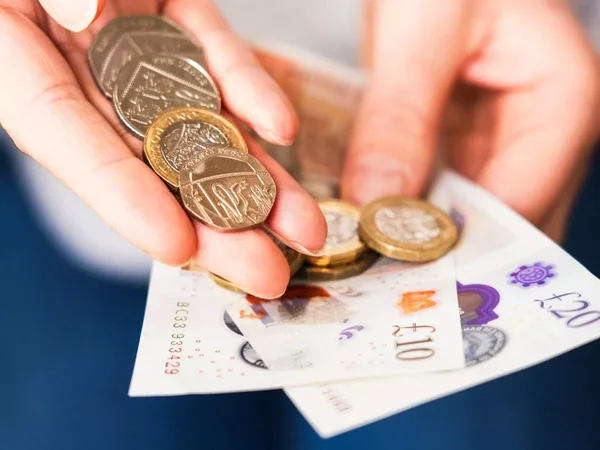Missing out on pension relief? You’re not alone. Thousands of UK taxpayers leave cash on the table every year because they don’t know they can claim extra tax relief on their pension contributions. Many people especially miss out on tax relief on pension contributions made to a private pension, not realising they could be entitled to more.
The good news? Getting your money back is easier than you think. In this article, we’ll cover who can claim, how the system works, and the simple steps to get what you’re owed. We’ll also explain how to claim relief for private pension contributions.
What Does "Claim Pension Relief" Actually Mean?
Think of pension relief as a thank-you gift from the government. When you save money into a pension, the taxman gives you back some of the tax you’ve paid as encouragement for planning your retirement.
Basic rate taxpayers (those who pay the basic tax rate of 20%) get 20% added automatically. So if you put in £80, your pension pot gets £100. However, those eligible for higher rate tax relief (40%) can claim back an extra 20% through their tax return.
If you are an additional rate taxpayer, you can claim additional rate tax relief of up to 25% more on top of the basic relief. The catch is that the extra relief doesn’t always arrive automatically sometimes you need to ask for it.
The basic tax rate is currently 20% and is the standard rate for most taxpayers.

How Does Pension Relief Actually Work?
There are two main systems in the UK. Relief at source is the most common one, where your pension provider will automatically claim basic rate tax relief from HMRC and add it to your pot straight away.
Net pay schemes take your contribution from your salary before tax is calculated. You get full relief through your payslip automatically, so you do not need to claim tax relief yourself. Most workplace pensions use one of these methods, and the system your employer uses affects whether you need to claim anything extra.
Both personal pension schemes and workplace pension schemes have different processes for claiming relief on pension contributions, so it’s important to know which one you have.
Check your payslip or ask your HR team which system applies to you. This single detail changes everything about claiming. Understanding your scheme helps you claim tax relief correctly and ensures you receive all relief on pension contributions you are entitled to.
Who Actually Needs to Claim Extra Relief?
Not everyone needs to lift a finger. Basic rate taxpayers usually get their full relief automatically, so if you pay 20% tax, you’re probably sorted.
Higher rate taxpayers often need to claim the extra 20%. This applies if you pay 40% tax on any of your income. Additionally, additional rate taxpayers can claim even more at the 45% tax level. Both higher and additional rate taxpayers must claim additional tax relief through their Self Assessment tax return.
Self-employed people nearly always need to claim through Self Assessment. Your pension provider handles the basic relief, but you must claim the rest yourself. Anyone with a relief at source pension who pays higher rate tax should check you might be owed money going back years.

How Do I Actually Claim My Pension Relief?
The process is simpler than most people expect. First, check if you already file a Self Assessment tax return if you do, this becomes part of your normal routine.
Don’t file Self Assessment yet? You’ll need to register with HMRC through your Government Gateway account online. On your tax return, find the section about pension contributions and enter the gross amount you’ve paid in.
Here’s where people trip up: gross means the amount including basic rate relief. If you paid £80 and your pension received £100, enter £100. HM Revenue and Customs (HMRC) is responsible for processing your claim and ensuring you receive the correct tax relief. HMRC calculates what you’re owed and either adjusts your tax code or sends you a cheque.
Keep records of all your pension statements. You’ll need proof of what you’ve contributed if HMRC asks questions.
What If My Employer Uses Net Pay?
Good news: net pay schemes do the work for you. Your pension contribution comes out before tax is calculated, so you get full relief automatically, whatever tax rate you pay.
There's nothing extra to claim on your Self Assessment. The relief happens through your payslip every single month. Check your payslip to confirm by looking for pension deductions appearing before tax is taken off.
One warning though: low earners can lose out with net pay. If you earn under the personal allowance, you won't get the basic 20% relief, whereas relief at source schemes work better for low earners.
What About Self-Employed Pension Relief?
Self-employed workers follow slightly different rules. Most personal pensions use relief at source, where the pension company claims 20% from HMRC and adds it to your pot automatically. Self-employed people often make private pension contributions and can receive tax relief on these contributions.
You don’t need to do anything to get that basic relief it happens behind the scenes. However, if you pay higher or additional rate tax, you must claim the rest yourself through your annual Self Assessment return. You can only receive tax relief on private pension contributions worth up to 100% of your annual earnings (or UK earnings). If you exceed this limit, you may have to repay any excess tax relief claimed.
Enter your gross pension contributions in the right section. HMRC works out what you’re owed based on your total income. Remember to use the gross figure again: if you personally paid £4,000 and the pension received £5,000 with relief, enter £5,000.
Many self-employed people forget this step. They’re losing out on serious money every single year.

How Much Money Could I Actually Get Back?
The numbers might surprise you. Say you earn £60,000 and pay £5,000 into your pension (£4,000 after basic relief is added) your pension pot receives £5,000 total.
As a higher rate taxpayer, you can claim back 20% of that gross amount. That’s £1,000 straight into your pocket or off your tax bill. Contribute more and the refund grows proportionally.
Additional rate taxpayers get even more at 45%. Multiply this by the years you haven’t claimed, and many people discover they’re owed £5,000 or more.
Withdrawing money from your pension can affect your ability to claim tax relief on future contributions, so check the rules before taking money out.
What Records Do I Need to Keep?
Organisation saves headaches later. Keep all annual pension statements from your provider as these show exactly what went into your pot each year.
Save payslips if you're in a workplace pension they prove your contributions came out of your salary. Furthermore, file your P60 every year since this shows your total income and tax paid.
Self-employed? Keep records of pension payments leaving your bank account and match these against provider statements. Store everything digitally if possible by scanning documents and backing them up to the cloud.
HMRC can ask for proof going back years. Having records ready means a quick response and faster refunds.

Can Pie Help With My Pension Relief Claim?
Sorting your taxes doesn't need to feel overwhelming. Pie is the UK's first personal tax app, dedicated to helping working individuals handle their tax situation with confidence.
It stands out as the only self assessment solution that offers integrated bookkeeping, real-time tax figures, simplified tax return processing, and timely expert advice. The app walks you through entering pension contributions correctly so you'll avoid common mistakes.
Real-time calculations show exactly what relief you're owed. Expert support is available when you need it, giving you answers about your specific pension situation without paying accountant fees.
Filing your return takes minutes instead of hours. The app handles the complicated bits while you focus on getting your money back.
Ready to Claim What You're Owed?
Start by digging out your pension statements from this tax year. Check whether you’re a higher or additional rate taxpayer by looking at your last tax return or payslip.
Register for Self Assessment if you haven’t already the HMRC website makes this straightforward. Then either tackle the return yourself or use Pie to guide you through it before the January deadline.
Don’t forget to check previous years too. That backdated relief could be sitting there waiting for you, and every pound claimed is a pound closer to the retirement you want.
Remember, pension relief applies to private and workplace pensions, and is separate from the state pension. If you live in Northern Ireland, the rules for claiming pension relief may differ, so check the specific guidance for your region.
Ready to make tax simple? Try Pie today and stop leaving money on the table. Get your pension relief sorted in minutes, not hours.











